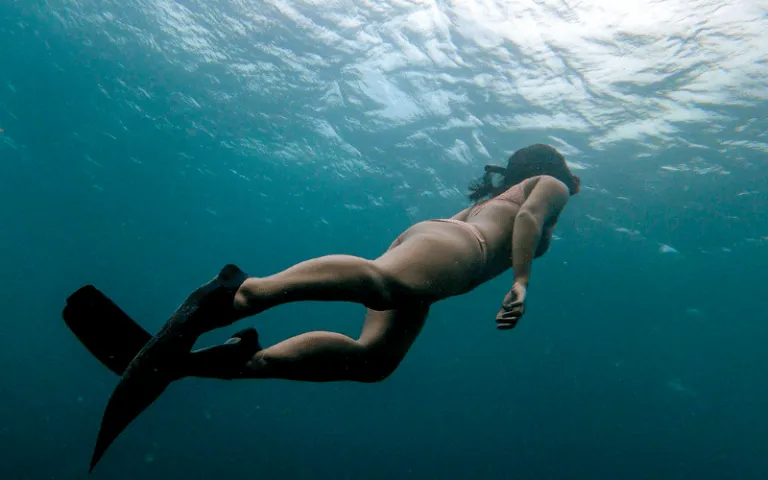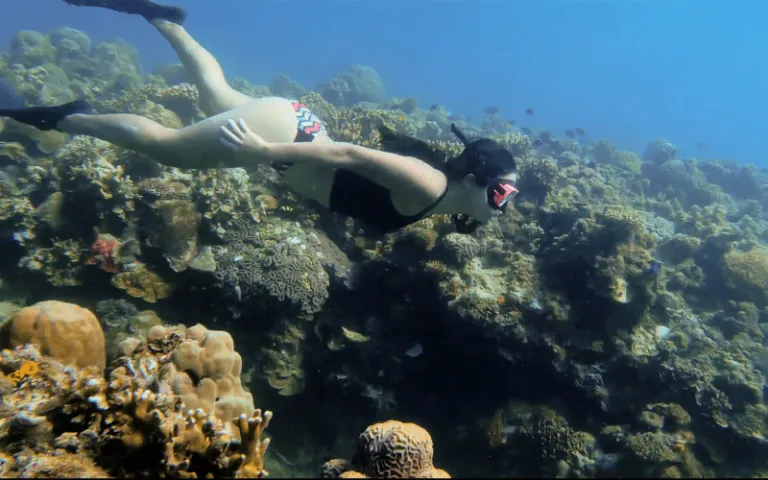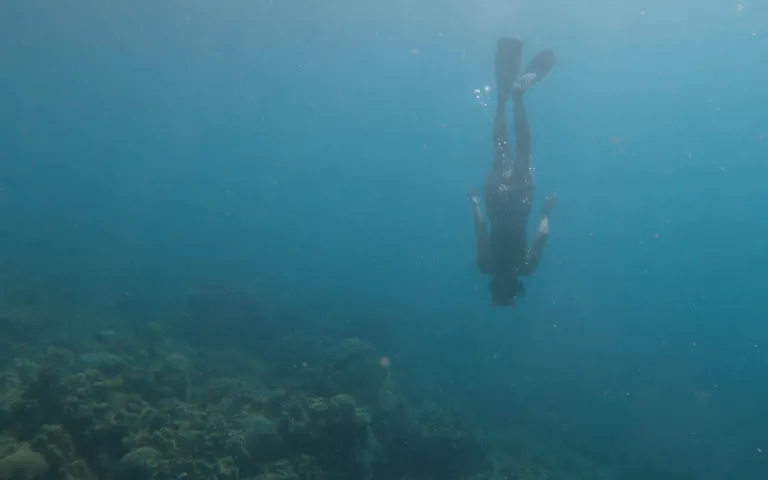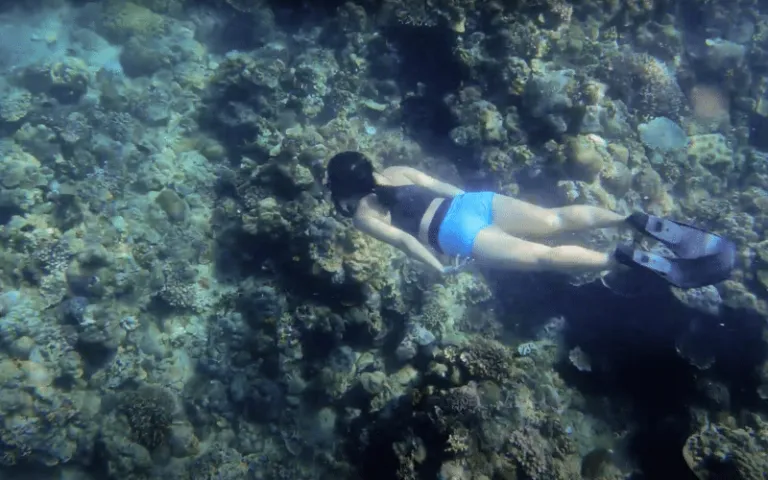Our favourite places to stay on this sleepy Cebu island.
How I Found Freedom as a First-Time Freediver

Thirty-two seconds.
That was how long I could hold my breath when our coaches at No Fins Freediver, a freediving resort in Batangas, Philippines, first asked us to inhale on land. Quite a gap from freediver Marese Secades’ national record of five minutes and four seconds; what more global record-holder Budimir Šobat’s, with 24 minutes and 37.36 seconds.
You’d think depriving yourself of oxygen is the hardest part of freediving, but there are many more factors to consider once you decide to explore the deep. I wanted to learn the sport plainly because I wanted to see more fish, but I didn’t realise how extreme it really is. Other categorically extreme sports are obvious in their extremeness — I surf, and overhead waves are always menacing, even to the non-surfer — but freediving is a subtle adventure; by the end of it, you’re literally gasping for air.
“You intentionally hold your breath for minutes long. People aren’t meant to do that,” Coach Da oriented us on our second day of training. The implication is that freediving requires purposefulness — pushing limits of the human body while also ensuring survival.
Learning the basics of freediving in the Philippines
At No Fins Freediver, coaches teach various levels of freediving. I enrolled in the basics; in two days, I learned quite a lot. Equalisation, to prevent ears and sinuses from receiving pressure from the depth. Finning, to maximise movement while conserving energy. Line diving, to sink deep in proper form. First-aid basics, to prevent serious accidents. Apparently, all freedivers need to have these covered to plunge just five metres into the ocean.
Also read: Government Promotes PH as One of Asia’s Major Diving Spots
Reaching my first five metres
It’s the 26th of February and the clouds in Mabini, Batangas are heavy and grey. The waters are ice-cold, and soon, it drizzles. The wind is blowing hard, the currents untamed, but the show goes on. “This weather isn’t considered wild,” Coach Trix, the freediving instructor assigned to me, says. “You should see how it is in December.”
And so we go. Masks, snorkels, and fins on, we swim to our diving spot. Coach Trix ties our buoy to a weight underwater. It’s five metres deep and seems impossible to reach.
We rest in the middle of the ocean before our first open water session starts. Coach Trix dives down, instructing us to watch how she pulls herself down “the line” — the rope that ties the buoy to the weight. I try to follow after her.

As a tenderfoot (tenderfin?), it takes me a few rounds to confirm that I’m equalising, and then a few more to reach the end of the line. Reaching the weight marks readiness to “swim away” — to let go of the line and freely tread underwater.
The first time I swim away, I’m strangely liberated — like I could explore the depths of the sea until I run out of breath. Unfortunately, that doesn’t take too long, but half a minute underwater — in a posture of calmness and repose — feels like a lifetime.
Navigating an extreme sport that discourages adrenaline
“Freediving is 20% physical strength and 80% mental strength,” Coach Louie advised us before our first open water session. Stress and anxiety increase your heart rate, taking up unnecessary amounts of oxygen; freediving requires as much stored oxygen as you can take. Before descending, freedivers have to relax until their minds and bodies are conditioned to hold their breath.
On land, we practise breathing techniques and stretch exercises. After our first meditation session, I manage to hold my breath for a minute longer than my first try. Later, this prolonged breath-hold allows me to calmly dive five metres deep and swim away for a few seconds. During this short span of time, I confront vibrant schools of fish, corals, and starfish. And then I float back towards the surface.

In the Philippines, Secades holds a record of 59 metres, which roughly measures to a standard-sized 20-storey building. It makes me wonder — what kind of life has she seen down there? More than that, I try to imagine: With her ability to control her urge to breathe, stay calm on command, and traverse a world far beyond the reach of common folks, what kind of life does she live? One thing I know for sure: I want in.
Also read: Palawan Makes Global Headlines With These Spectacular Diving Sites
Duck diving into the deep blue
Our second day of freediving is sunnier than our first. But clear skies don’t always mean warm waters — the sea is still cold; this time, it’s swarming with tiny jellyfish, too. Needless to say, I have a lot to overcome, but I gladly immerse myself in the discomforts of open water. I learn duck diving, and I become even freer. No fancy equipment, no distractions — just me, my fins, and the sea.
Also read: 9 Best Diving Spots in the Philippines for Your Aquaventures

I have a lot more to learn when it comes to freediving. More than equalisation techniques and finning methods, I have to train my body to relax and focus on what’s in front of me. Only then can I hold my breath longer, push my limits, and go deeper.
Published at
About Author
Danielle Uy
Subscribe our Newsletter
Get our weekly tips and travel news!
Recommended Articles
10 Bantayan Island Resorts, Hotels, and Rentals for Your Tropical Escape 10 Best Mountain Cafes in the Philippines for Your Peak Coffee Experience Coffee date on the mountains, anyone?
10 Family Outing Ideas in Metro Manila Under ₱500 Looking for a weekend bonding with the family under ₱500? Head to these places, pronto!
10 Fun Things to Do in Manila Alone Live your best life in Manila, even when you’re riding solo.
10 Instagrammable Laguna Restaurants and Cafes You’ll Love Elevate your Insta-game at these Laguna spots.
Latest Articles
Legoland Shanghai Opening in 2025: What to Expect New theme park alert in China
Pahiyas Festival 2025: A Vibrant Celebration in Lucban Quezon Pahiyas is back and brighter than ever!
Top 10 Family-Friendly Things to Do in Europe Unmissable experiences for all ages
Scoot’s Direct Flights from Singapore to Iloilo Are Finally Here — Here’s What You Need to Know Fly direct from Singapore to Iloilo with Scoot!
Cheung Chau Bun Festival 2025: Where to Go, What to Do, and How to Join Experience the thrill of the Cheung Chau Bun Festival 2025


